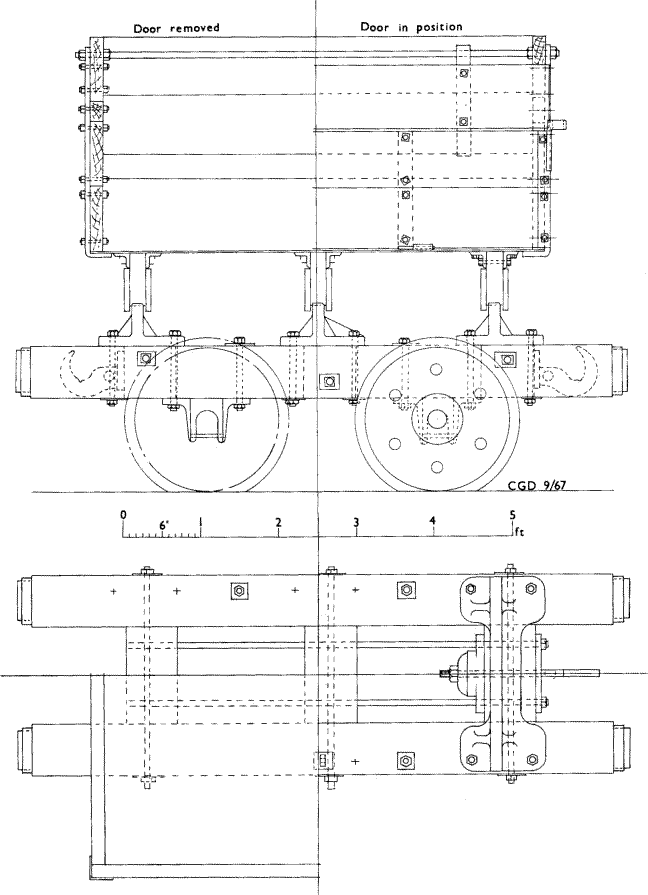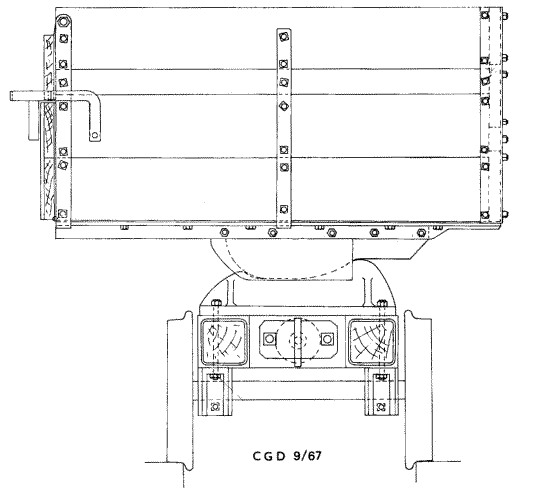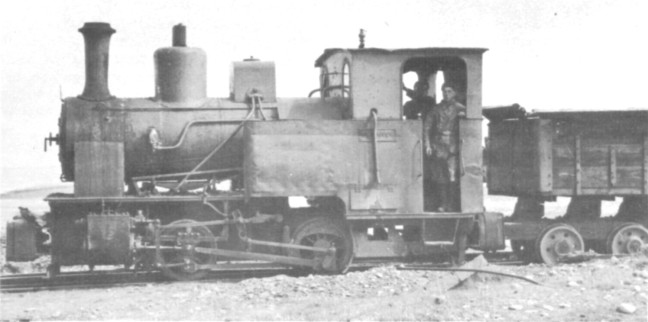
| THE INDUSTRIAL RAILWAY RECORD |
© JUNE 1969 |
NARROW GAUGE WAGONS
| (10) PIEL & WALNEY GRAVEL CO LTD |
C. G. DOWN |
Walney Island, immediately off the Lancashire coast at Barrow-in-Furness, was infrequently visited by railway enthusiasts even when the Piel & Walney Gravel Co Ltd (now the Roose & Walney Gravel Co Ltd) still operated their 3ft 0in gauge railway system. This was closed in 1962 after gale damage to the pier, and when the rolling stock was scrapped a year later the main reason for visiting the island was lost, although a number of traces of the railway still remain. Both the pier and loco shed are almost intact, while the trackbeds are often marked by sleepers remaining in situ. There are also a number of parts of the wooden side-tipping wagons that were used here, and these have formed the basis of the drawing.
This depicts a 'typical' wagon. Several of the surviving frames were measured up, while details of the body came from the sole survivor, found submerged in an old pit! No wheels now remain and a photograph by Mr. G. D. Hawkins was consulted for details of these.
There are several features of interest which distinguish this wagon from other types of side-tipper. The door is of two parts, hinged at top and bottom. The upper door lies behind the lower and is thus retained in position, while the lower is held with side catches. Another unusual feature is the body rocker mechanism - three massive iron castings which have the channel on the body half rather than the frame. This is in contrast to the much simpler Scaldwell wagon (see RECORD 13, page 26).
The frames are heavy wooden beams, 8in square with three cross members that are bolted through. There are also two longitudinal rods which not only brace the frame but secure the drawhooks. The hooks are sprung with rubber pads contained in the bell housing in the inside of the cross-members. Wheel details are not certain; the wheels were about 1ft 10in diameter and the wheelbase was 3ft 0in. There were two patterns of wheel, one having six holes as shown, and the other being solid.
Internal dimensions of the body varied rather. That measured was virtually square, at 5ft 6in long and 5ft 7in wide, with a depth of 2ft 9in. The floor was of metal sheet, sometimes bent over the open edge of the body (not shown in the drawing) and the tipping channels were bolted direct to the floor. Square-headed bolts were usual, although some bodies were made with hexagonal ones, at least in part.
On the top of the frame members opposite the door was an eye and chain, used to secure the body. On the side of the frame here was fixed the 4in by 2in brass plate with the number engraved upon it. No.3 was the frame principally used in the drawing. There seems to have been about fifty wagons in all when the system was operative, plus a few U−shaped metal side-tippers.



VYRNWY (Orenstein & Koppel 12242 of 1930) with one of the wagons. (F. Jones)
|
|
|